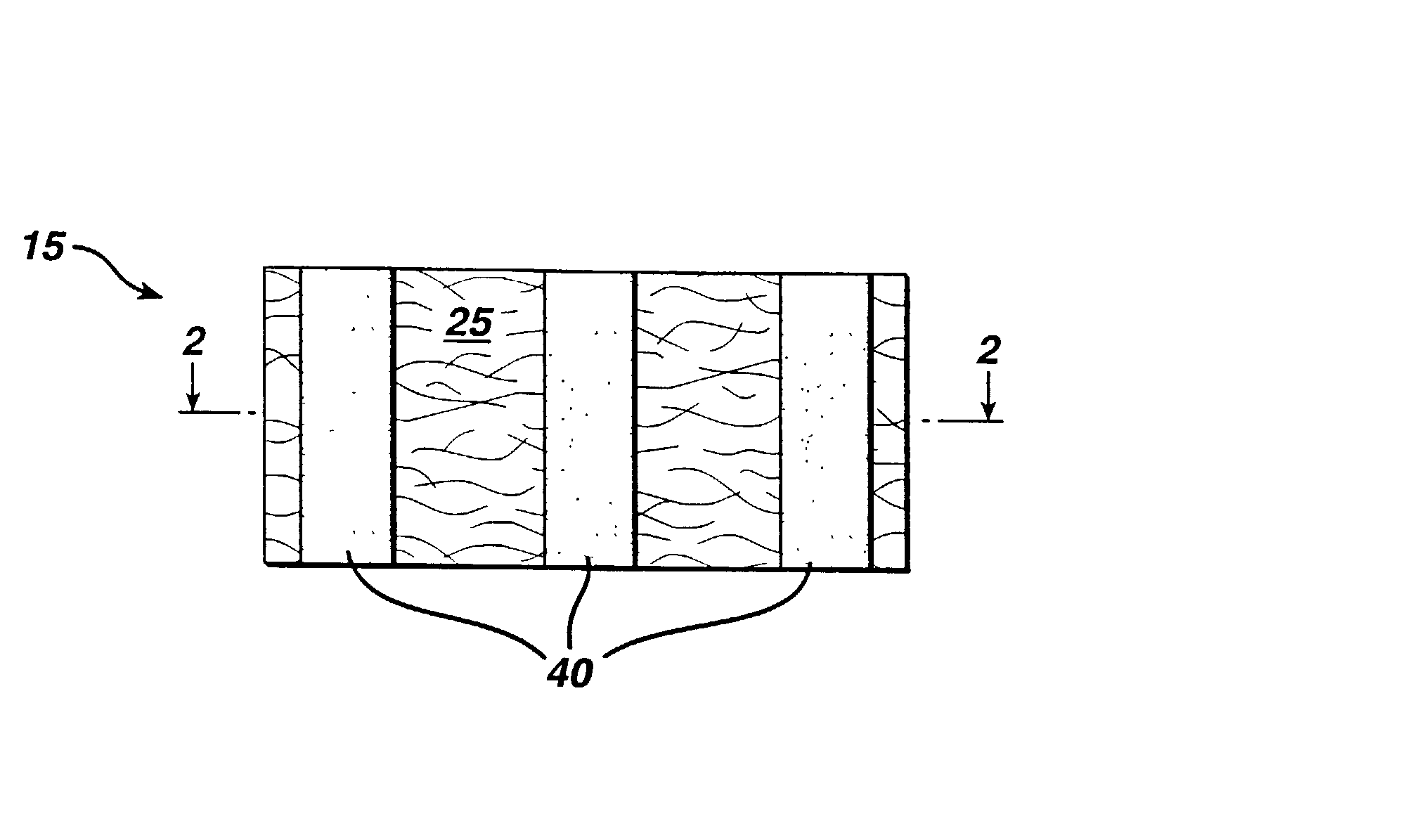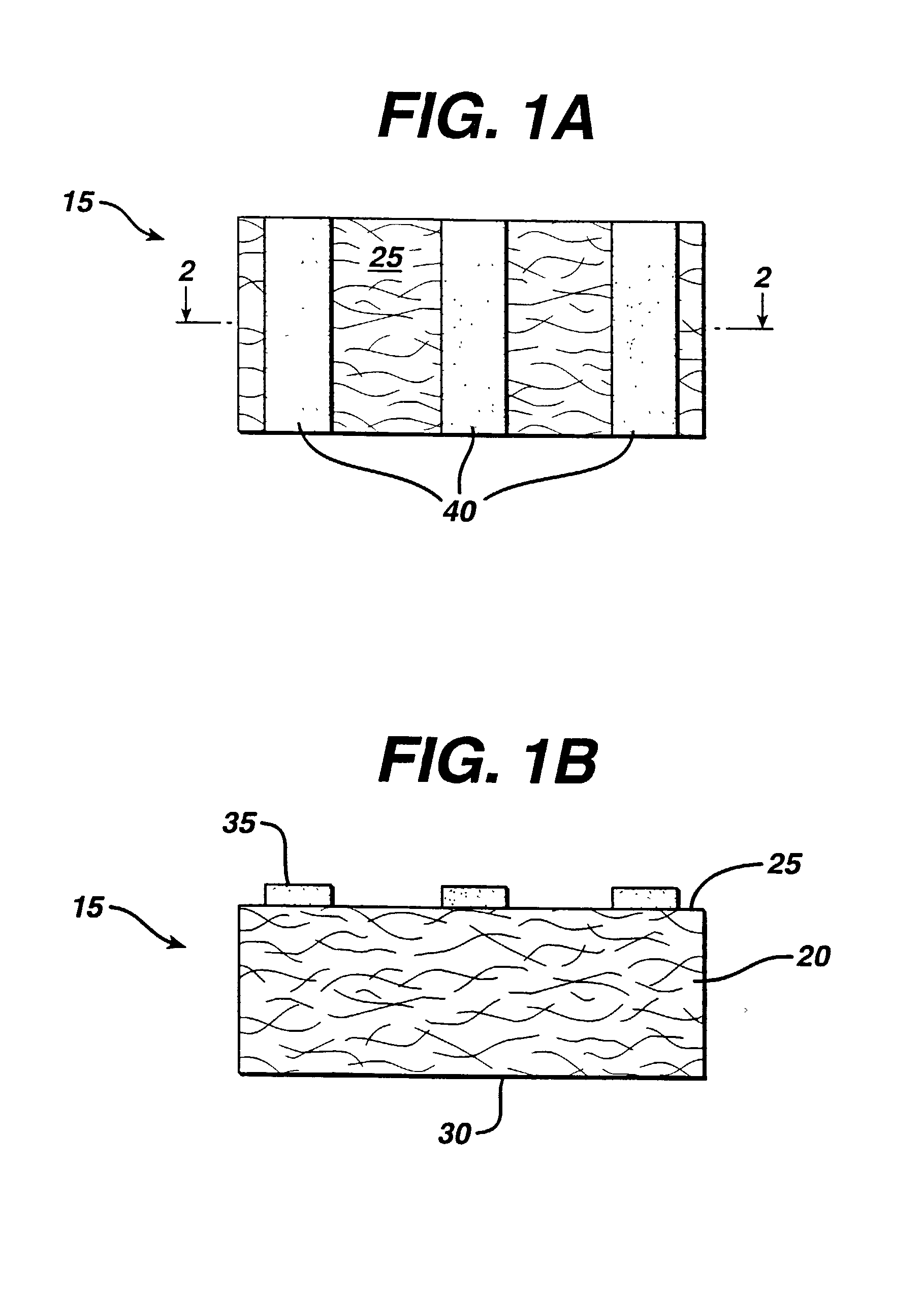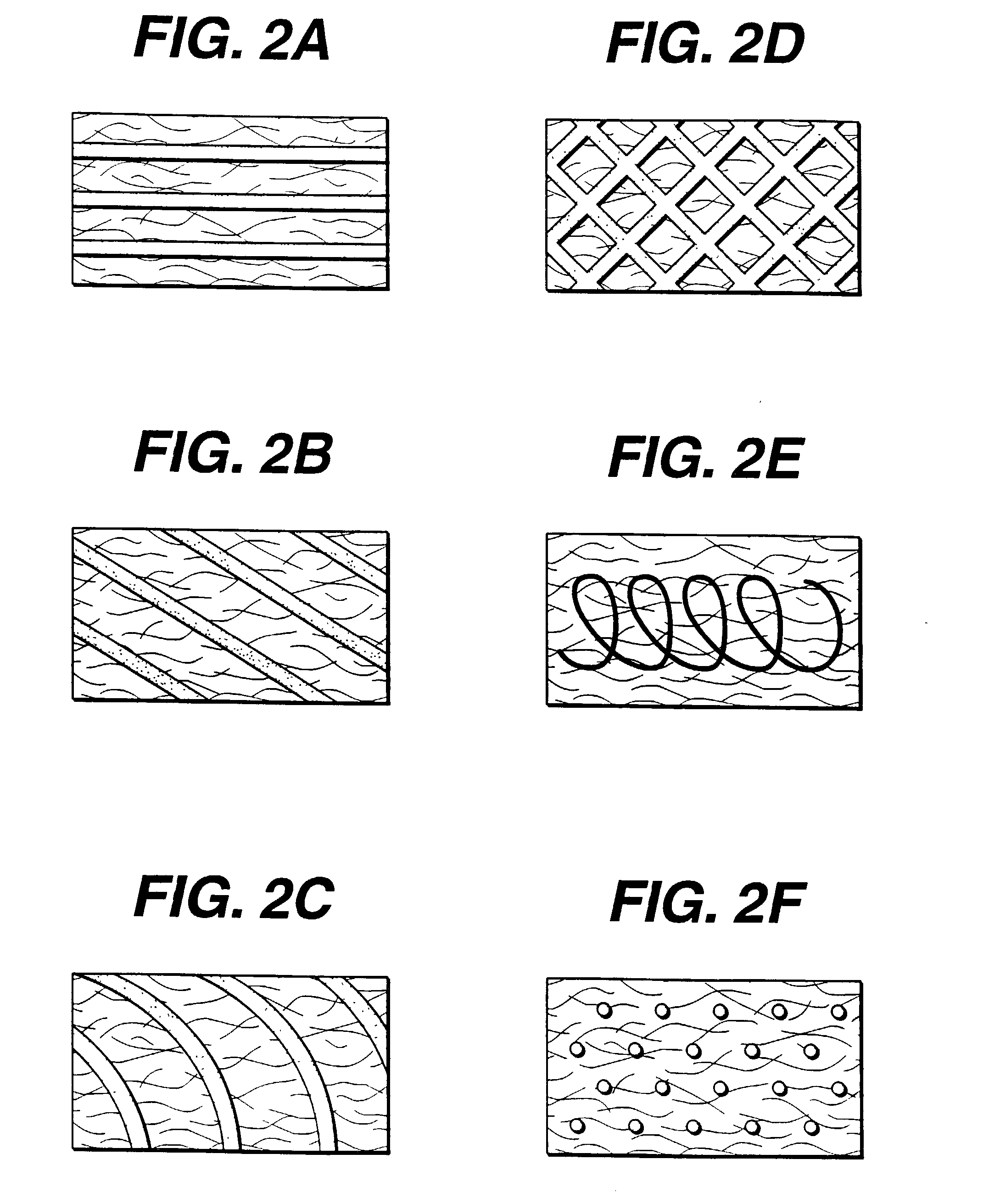Dressings and bandages comprising same
a technology of wound dressings and bandages, applied in the field of bandages and wound dressings, can solve the problems of inconvenient and messy use of adhesive materials in the wound area of wound dressings, the inability to painlessly remove bandages without traumatizing the wound, and the inability to achieve painless removal of bandages
- Summary
- Abstract
- Description
- Claims
- Application Information
AI Technical Summary
Benefits of technology
Problems solved by technology
Method used
Image
Examples
example 2
[0078] Preparation of a Continuous Roll of Dressing of the Invention by Discontinuous Coating of the Ointment Composition on an Absorbent Substrate
[0079] The equipment used to apply a discontinuous coating of the ointment composition to a web of the absorbent substrate in the preparation of the dressings and bandages of the invention is shown in FIG. 5. A 5 gallon pail of the ointment composition of Example 1 was placed in a Model 505 Bulk Melter Applicator (Nordson Corp., Boothwyn, Pa.) (not shown). The melter comprised a platen heater which heats the upper surface of the ointment composition contained in the pail. The platen was heated to a temperature of about 133.degree. F. to. melt the composition contained in the uppermost portion of the pail. The ointment composition was pumped via a gear pump (not shown) located in the Melter-Applicator via line 86 to slot die 88. The die 88 was maintained at a temperature of about 128.degree. F. during the coating operation. A 7 / 8"-wide web...
example 3
[0080] One Embodiment of a Bandage of the Invention
[0081] An adhesive bandage is made using the dressing described in Example 2. This adhesive bandage is illustrated in FIG. 6 of the drawings. Adhesive bandage 100 comprises a backing material 105 having apertures 106 therein; an absorbent substrate 110; a discontinuous coating of an ointment-like composition 115; and a porous covering material 120. The upper surface 105a of the backing material is coated with a layer of a pressure-sensitive acrylic adhesive 107. It will be understood that any of the adhesives well known in the art for use with adhesive bandages may be used in place of this adhesive. The adhesive may, if desired, be deposited on the backing layer in a continuous or discontinuous pattern rather than as an overall coating as illustrated in the drawing.
[0082] As is further illustrated in the drawings, substrate material 110 is preferably provided in the form of a fibrous pad which is centered from end-to-end of the back...
example 4
[0091] Another Embodiment of the Bandage of the Invention
[0092] Referring now to FIG. 9, there is illustrated in longitudinal section another embodiment of an adhesive bandage 200 of the invention in which porous covering material 120 has been given an alternative configuration. As was the case with adhesive bandage 100 illustrated in FIG. 6, adhesive bandage 200 comprises backing 105; adhesive layer 107; absorbent substrate material 110; ointment-like composition 115; and porous covering material 120. In bandage 100 disclosed in FIG. 6, porous covering material 120 was coextensive in its length and width with fibrous substrate material 110. In the alternative embodiment illustrated in FIG. 9, porous covering material 120 comprises downwardly extending portions 122a, 122b and longitudinally extending tab portions 123a, 123b. Downwardly extending portions 122a, 122b serve to cover the ends 112a, 112b, respectively, of fibrous substrate material 110 and the ends 117a, 117b, respective...
PUM
| Property | Measurement | Unit |
|---|---|---|
| skin temperature | aaaaa | aaaaa |
| viscosity | aaaaa | aaaaa |
| viscosity | aaaaa | aaaaa |
Abstract
Description
Claims
Application Information
 Login to View More
Login to View More - R&D
- Intellectual Property
- Life Sciences
- Materials
- Tech Scout
- Unparalleled Data Quality
- Higher Quality Content
- 60% Fewer Hallucinations
Browse by: Latest US Patents, China's latest patents, Technical Efficacy Thesaurus, Application Domain, Technology Topic, Popular Technical Reports.
© 2025 PatSnap. All rights reserved.Legal|Privacy policy|Modern Slavery Act Transparency Statement|Sitemap|About US| Contact US: help@patsnap.com



